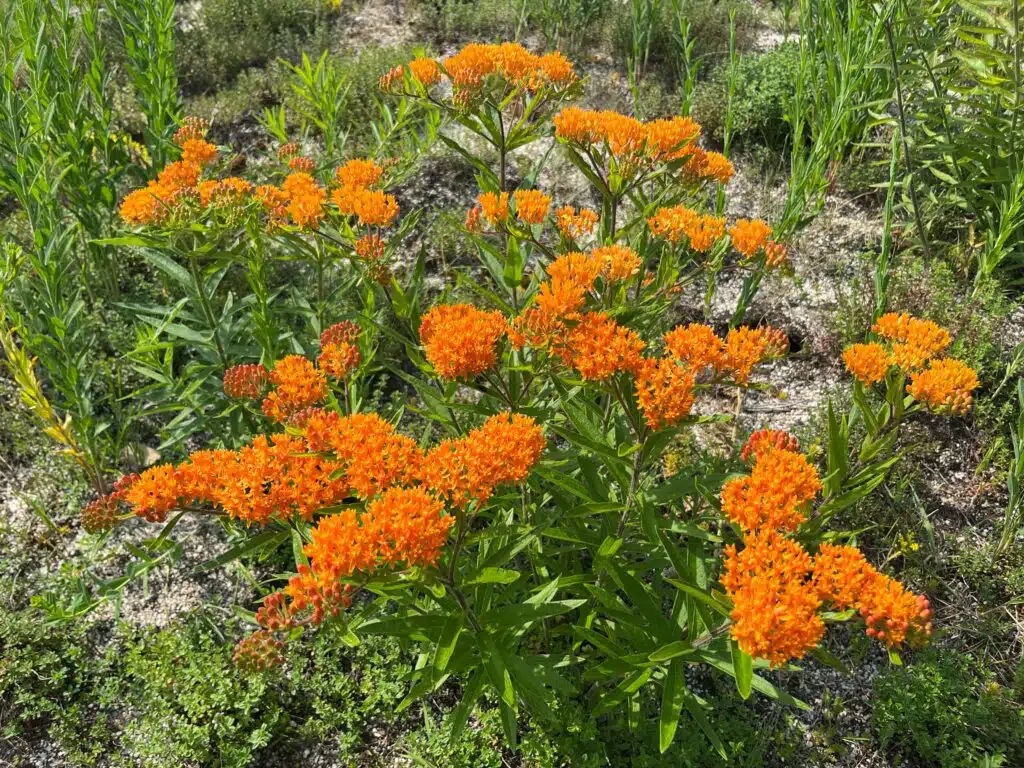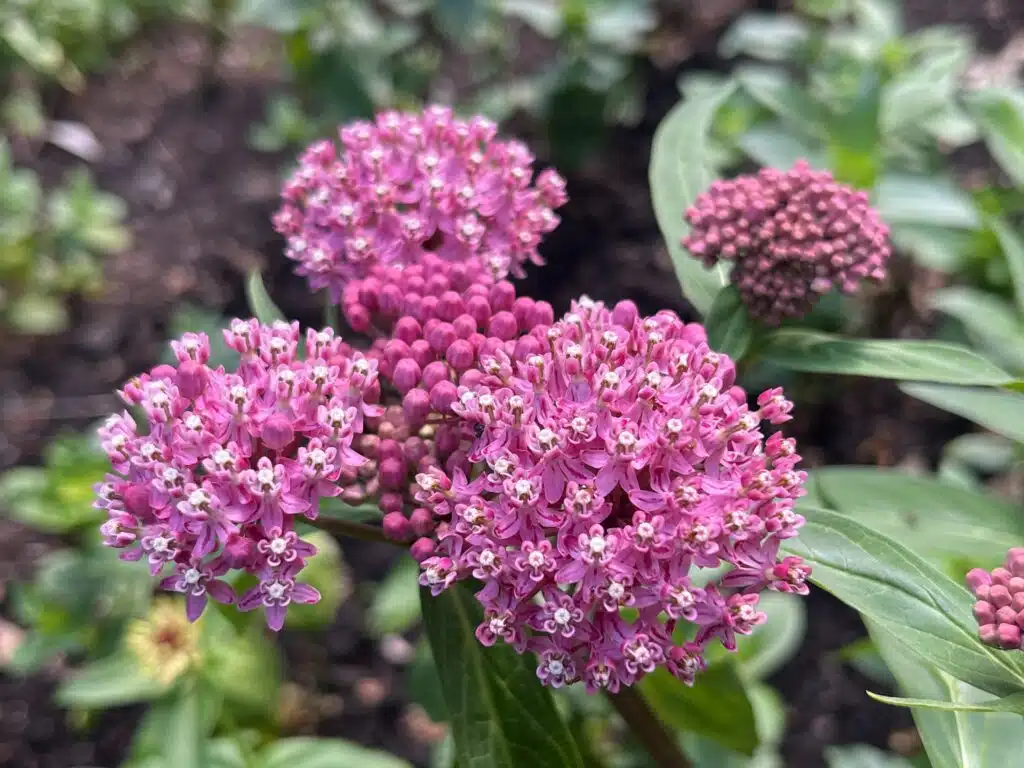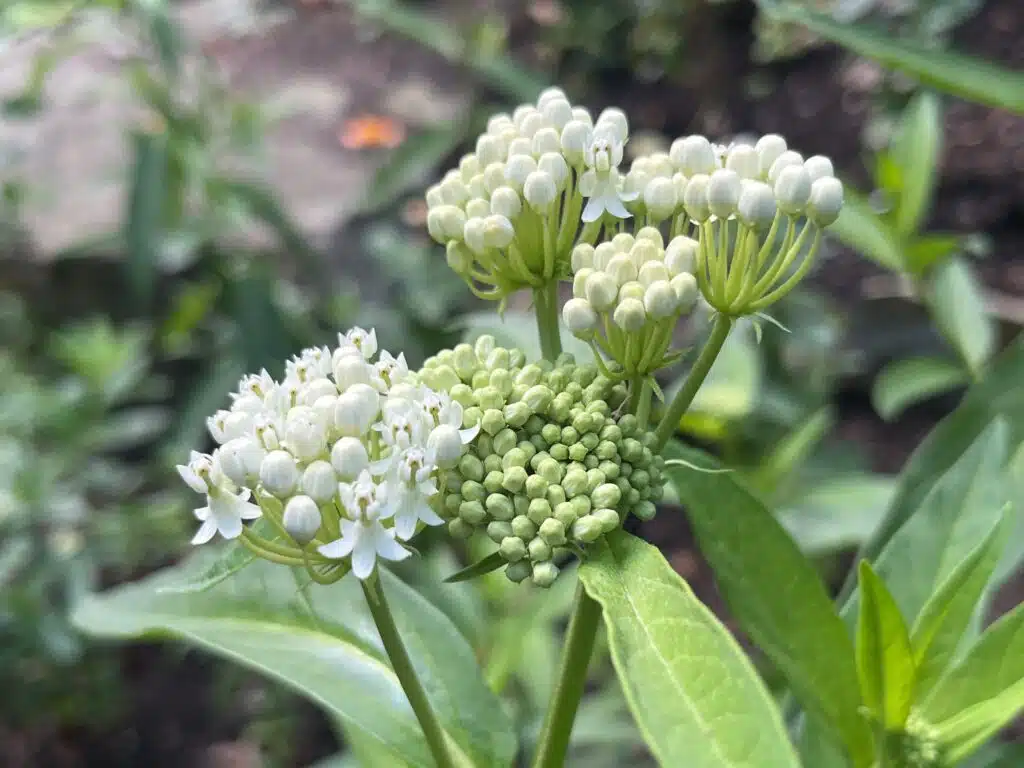
Is it June in Ohio, or August in Florida? It’s been incredibly hot and humid lately, but don’t let that stop you from coming out to see what’s poppin’—we have some stunning summer wildflowers coming into bloom and they are worth braving the heat!
Holden Arboretum
This week, I want to shine the spotlight on milkweeds, one of our most iconic and important groups of native wildflowers. While monarch butterflies feed on nectar from a wide variety of plant species, they only lay their eggs on milkweeds. Unlike most insects, monarch caterpillars are able to feed on their leaves, which exude a milky latex that is unpalatable and even toxic to most herbivores (hence the common name “milkweed”). In order to support monarch butterflies in our area, it is essential for milkweeds to exist in the landscape, and no butterfly garden is complete without them. Plus, aside from their specialized relationship with monarchs, their flowers are a beloved nectar source for a wide variety of other pollinators, especially bumblebees.
The best place to see milkweeds at the arboretum is, of course, in the Arlene and Arthur S. Holden Jr. Butterfly Garden. Perhaps the most eye-catching species in bloom right now is Asclepias tuberosa, or butterfly milkweed. There is simply no other plant with flowers of such an intense orange!

You can also find Asclepias syriaca, or common milkweed, throughout the butterfly garden. With its wide, blue-green leaves and pendant pom-poms of dusty pink flowers, the name “common milkweed” does not do this stately beauty justice. On a sunny day, you are almost guaranteed to see at least a couple of bumblebees excitedly buzzing about its flowers.

Finally, a non-milkweed highlight of the arboretum this week is Nymphaea ‘Chromatella’, a stunning waterlily that can be found in the northwest corner of Corning Lake near the Gardner Terrace. Plant Records Curator Ethan Johnson snapped this photo of a dragonfly resting on its delicate petals—have you ever seen a more photogenic flower?!

Cleveland Botanical Garden
If you plan on visiting the Botanical Garden, the Butterfly Garden has some milkweeds to enjoy as well. Here you will find three cultivated varieties of Asclepias incarnata, or swamp milkweed. Asclepias incarnata ‘Cinderella’ is most similar to the straight species with rosy pink flowers, while ‘Ice Ballet’ and ‘Milkmaid’ have been bred to produce white flowers.


Several milkweeds can be found in the Hershey Children’s Garden as well. Although the treehouse is still blocked off for construction, make sure to stop by and check out the freshly redesigned veggie bed area with sparkling new raised beds! Walking through the garden, you’ll also catch a glimpse of the sunny flowers of Rudbeckia hirta, or black-eyed Susans, just beginning to bloom.

Enjoy the summer blooms, and try to stay cool this week!

Alexandra Faidiga
Assistant Curator
Alex collaborates with the Curator of Living Collections, Plant Records Curator, and horticulture staff to ensure the Living Collections are not only captivating but also meaningful for research, ecology and conservation. Alex also helps coordinate collecting trips to acquire new plants for the Living Collections and documents them using GIS and our plant records database. She is motivated by the role public gardens can play in preserving biodiversity and loves helping people discover their new favorite plant.













